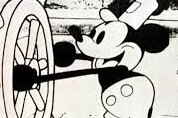This post contains affiliate links, meaning I may earn a commission if you click through and make a purchase. As an Amazon associate, I earn from qualifying purchases. This comes at no additional cost to you. I only recommend products or services that I believe will provide value to my readers based on personal experience or thorough research.
Creating characters that stick around in people’s minds is a big deal in storytelling. These characters can define a story, turning it from good to great, and sometimes, unforgettable. They tug at our hearts, make us laugh, or even give us someone to root for, which is why they’re crucial.

Take Mickey Mouse for instance. That mouse isn’t just a cartoon character; he’s an icon recognized all over the world. He’s inspired joy and nostalgia in generations, becoming more than just a part of Disney but part of cultural heritage. It’s that emotional connection with audiences that makes Mickey such a memorable figure.
And it’s not just about being cute or flashy. Memorable characters often bring a deep-seated emotional response. They make us feel something—whether it’s empathy, anger, or even nostalgia. Think of the late nights you might have spent curiously watching Mickey’s adventures or how you felt when he finally saved the day. This emotional bond is why they stay memorable.
Not to forget, these memorable figures also pack a punch when it comes to creating a legacy. They help brands and stories endure, setting a standard and becoming symbols of timelessness. Characters like Mickey make it possible for Disney to thrive across cultures and eras.
Crafting such characters isn’t only about being original but about reaching people on a deep, emotional level. It’s about personalities that linger long after the story ends.
Building a Character’s Foundation
Memorable characters don’t just appear out of thin air; they’re built from a solid foundation. Knowing where they come from, what drives them, and who they are at their core is crucial to creating someone unforgettable.
Start with the essentials: a character’s background, personality, and motivation. These elements make up the backbone of who they are. Understanding these fundamentals helps guide their actions and reactions within your story.

Character archetypes are a useful tool. Whether it’s the hero, the mentor, or the trickster, these archetypes can provide a template to build upon. Think of Jack Skellington from ‘The Nightmare Before Christmas.’ At first glance, he’s just a skeleton running Halloween Town, but dive deeper, and his backstory and motivations paint a picture of a character struggling with monotony and yearning for change.
Consistency in how they act and speak is key, but they also need depth—something that gives them layers to explore. A character without depth might work for a couple of pages or scenes, but won’t leave a lasting impression.
Crafting characters with a solid foundation isn’t just about what they do in the story but about how they make us feel. When characters have rich histories and consistent personalities, an audience is far more likely to connect with them.
The Art of Character Distinction
Making your character stand out is all about crafting features that are unforgettable, both visually and emotionally. Simply put, they need to be distinct, so they don’t get lost in the sea of other fictional personas.
Start by giving them unique physical traits or quirks that make them instantly recognizable. Maybe it’s the way they walk, a signature piece of clothing, or a distinct scar. These features make them pop!
Besides looks, their emotional traits are just as important. Think of their fears, desires, and habits. It’s these internal characteristics that really differentiate them and make them relatable to audiences.

Look at Iron Man, or Tony Stark. The guy’s not just a genius in a suit. He’s also got charisma, a sharp wit, and a fair share of flaws. These facets make him real and intriguing, setting him apart from countless other superheroes.
Balance is key. Ensure they’re unique but still relatable. People connect with characters who have human-like ups and downs, even if they come from a distant planet or a fantasy world.
In the end, it’s about creating someone your audience will remember and form a bond with, whether they’re on screen, in a book, or through any other medium. Such characters bring your story to life, keeping it lodged in hearts and minds.
Designing Compelling Character Arcs
A character’s journey can make or break a story, giving insight into how they grow and change over time. Crafting these arcs means mapping out where characters start, where they end up, and the pivotal moments in between.
The arc is more than just a plotline; it’s about personal transformation and growth. A good character arc provides depth, showing a character learning and evolving, often overcoming their flaws or fears.
Take Iron Man’s story. He starts as a self-centered billionaire but through trials becomes a hero committed to protecting others. His transformation is compelling, illustrating redemption and highlighting the impact of personal choice. Who doesn’t love that kind of journey?
Character arcs are dynamic. They resonate with audiences because they reflect real-life struggles and triumphs, making characters unforgettable by their ability to change. A well-crafted arc can also drive the plot forward, keeping readers engaged.
A story benefits greatly from arcs that fit the narrative structure like a glove. Whether it’s a rise to power, a fall from grace, or redemption, each provides a different lens through which to view the character.
Effective arcs tap into universal themes of growth and change, ensuring characters remain relatable and their stories impactful. Designing such arcs requires thoughtfulness and an understanding of human nature.
Integrating Characters into Plots and Worlds
Characters don’t live in a vacuum; they’re part of a bigger narrative that includes plot and world-building. Seamlessly integrating them into these elements makes their stories richer and more believable.
When plotting a story, it’s crucial to weave characters into the very fabric of the narrative. This means thinking about how their personal journeys interact with the larger story. How do their actions affect the world around them, and vice versa?
Consider Mickey Mouse, whose presence is a cornerstone of the Disney storytelling empire. His character isn’t just part of isolated adventures; Mickey plays a consistent role that links together different narratives, often setting the tone for the whimsical world Disney crafts.
Character and plot coherence is vital. It ensures that characters don’t feel shoehorned into situations. Instead, their involvement in the story feels natural, a perfect fit within the world you build.
Creating a fictional world takes imagination. But remember, it should enhance your characters’ experiences. Whether it’s a fantasy realm full of dragons or a bustling modern city, the setting should complement what’s happening to and within your characters.
Building worlds and plots that highlight character strengths, challenge their weaknesses, and drive their development creates a dynamic interaction. It’s this interplay that keeps audiences coming back, eager to see how characters grow and change within their environment.
Ensuring Longevity Through Character Development
Creating characters that stick around in people’s minds requires more than just an introduction and a plot. Longevity comes from continually evolving them, making sure they stay relevant and engaging over time.
Innovation and reinvention are key. It doesn’t matter if your character was created decades ago or just yesterday. Keeping them adaptable to new contexts and media ensures they stay fresh. This could mean updating their story to reflect changing societal norms or exploring new dimensions of their personality.
Jack Skellington, with his timeless appeal, endures because he’s both nostalgic and fresh. He’s more than just the Pumpkin King; his journey of self-discovery resonates across generations, allowing him to remain relatable and engaging.
Audience feedback is a powerful tool in evolving character development. Listen to what fans love about your characters, where they feel unsatisfied, and what aspects leave them wanting more. This feedback loop can help shape your characters in ways that resonate with real people living in today’s world.
The goal is to create characters with depth and adaptability who can thrive across different storylines and formats. That ensures they’ll remain beloved and relevant, capturing the hearts and minds of audiences for years to come. It’s about crafting figures that aren’t just here for now, but forever.



This article offers great insights into building memorable characters, emphasizing the importance of emotional connection, distinct features, and solid development. It highlights the significance of creating a character’s foundation, personality, and arc while ensuring their relevance over time. One question that arises:
How do you balance character originality with audience relatability without losing impact?
Ooh, that’s such a deep question—love it! Balancing originality and relatability in character design is like making the perfect smoothie: you want enough unique ingredients to make it stand out but not so much that it’s too “out there” for people to enjoy. Here’s how I think about it:
Anchor with Familiarity: Start with something relatable—like a common personality trait, a recognizable archetype, or features that reflect real-world experiences. This gives your audience something to connect with right away.
Add Unique Twists: Once you’ve got that relatable base, spice things up with unexpected details—like exaggerated proportions, quirky accessories, or unusual backstory elements. These little “twists” make the character feel fresh and original.
Test the Balance: Imagine your character in different scenarios (funny, emotional, action-packed) and see if they still make sense. If they feel too generic, lean into originality; if they’re too wild, scale back to something more grounded.
Know Your Audience: If your audience loves fantasy, they might be totally cool with a dragon chef who cooks with magical flames. But if they prefer slice-of-life stories, that might be too much. Adjust accordingly!
Story First: Ultimately, the character should serve the story. Their originality or relatability will shine best when it feels natural and supports the narrative.
Relatable doesn’t have to mean predictable, and original doesn’t have to mean bizarre—there’s always that sweet spot where a character feels real but still has that special “wow” factor.